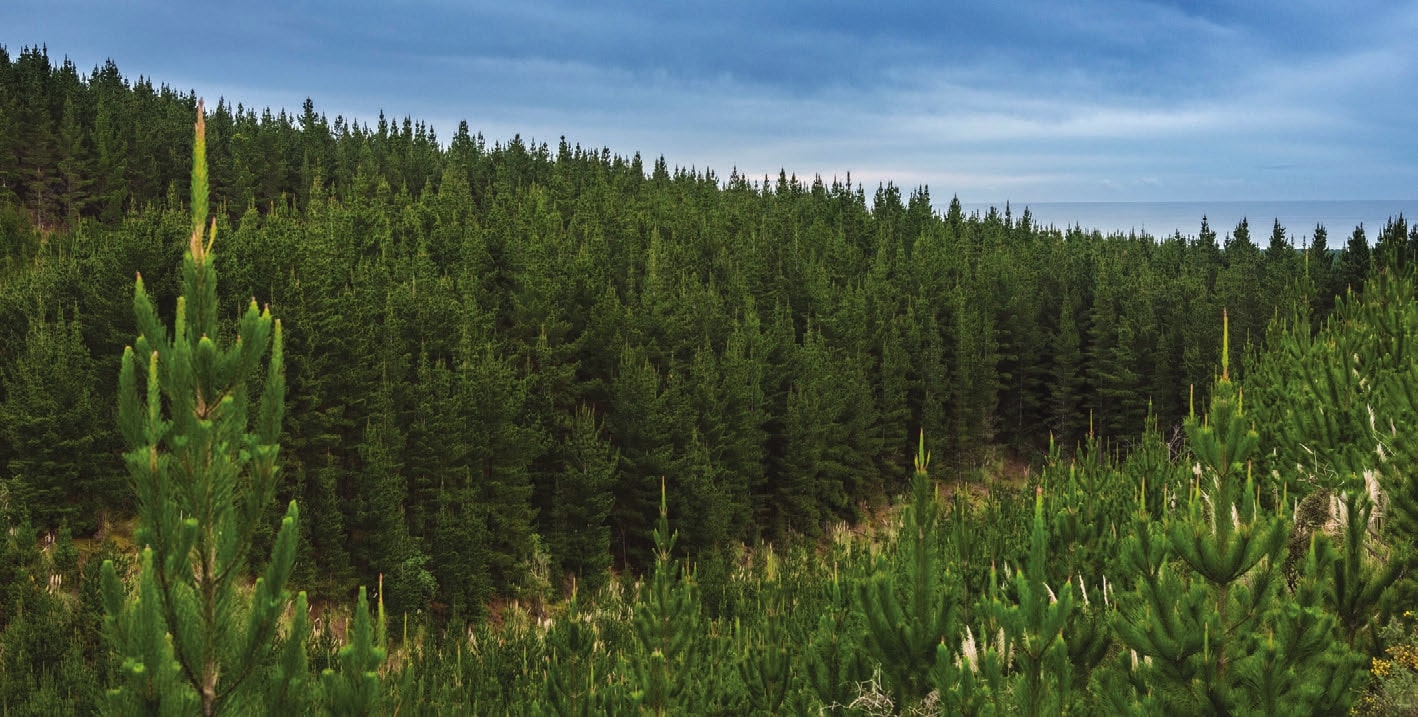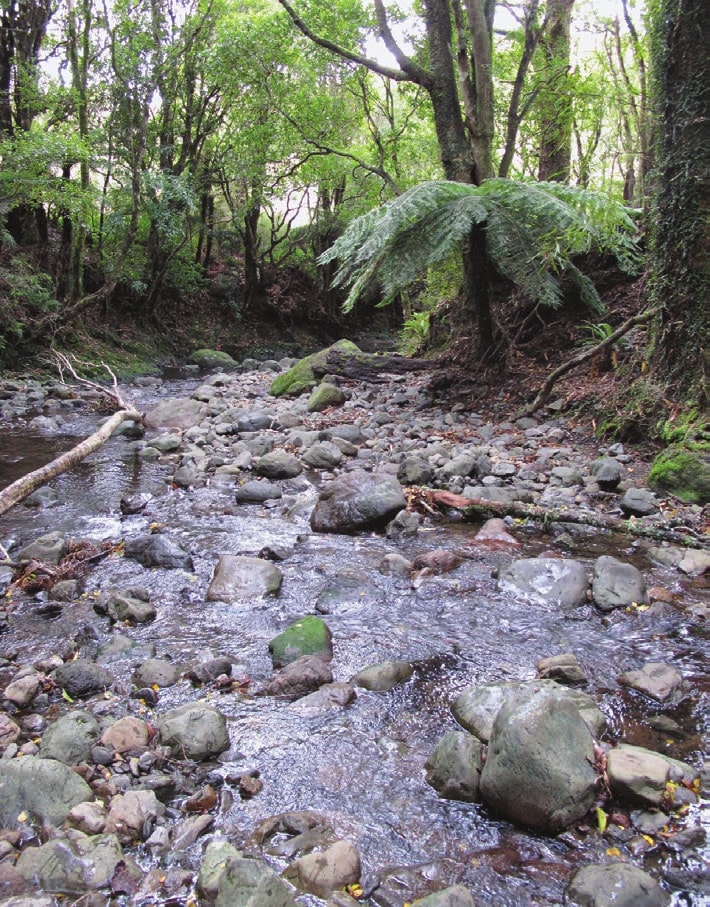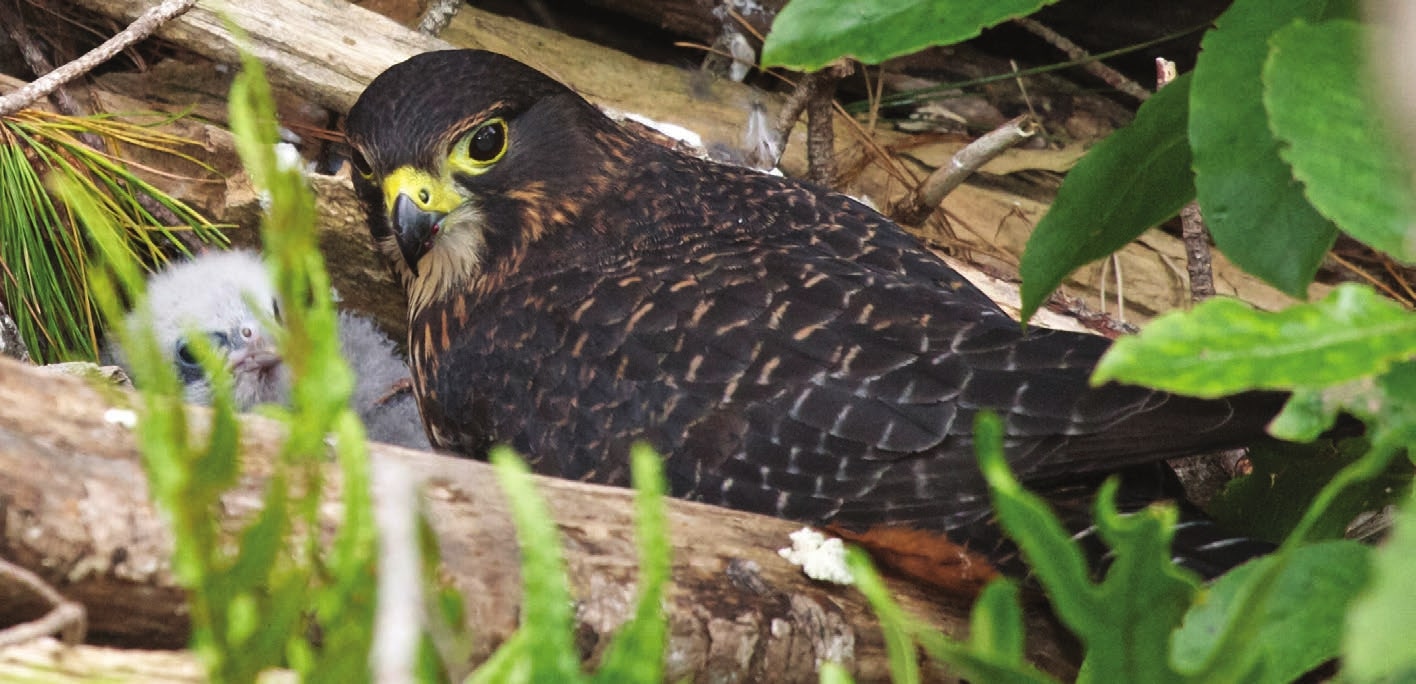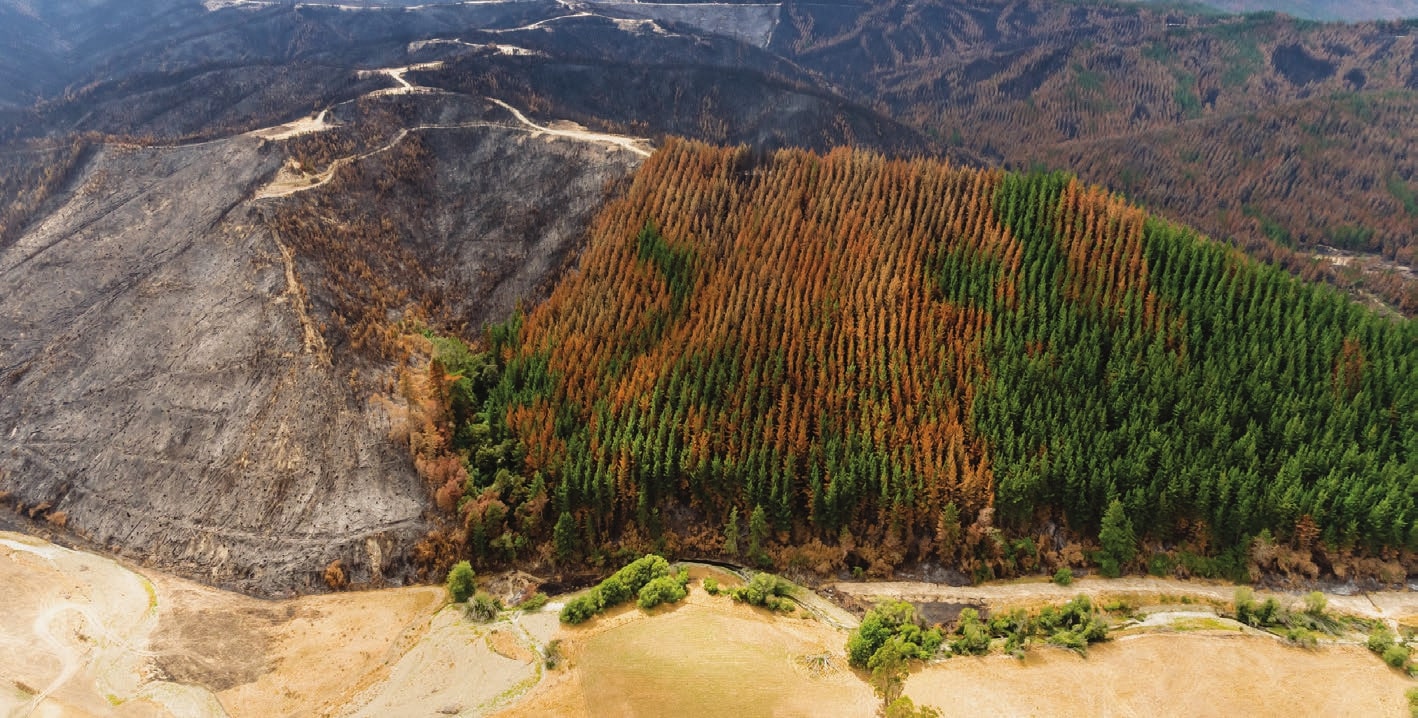Myth conceptions- Are planted forests really the Devil?
Michelle Harnett, New Zealand Tree Grower May 2019.
…radiata pine is a foreign weed, spreads like herpes, makes rubbish timber and falls over after 50 years.
A Stuff article on planting pines to make money from carbon farming attracted around 100 comments like the one above. Farm and forest owners will be interested to learn that they are greedy swindlers who are ruining New Zealand. Planted forests are also barren deserts which destroy water and soil.
The comments on a Stuff article may not fully represent all New Zealanders’ opinions, but they do give an eye-opening view of the ‘facts’ and beliefs held dear by some. Here are some of bad things alleged to come along with planted forests.
Planted forest soil health and quality
Pine ruin land. They take a lot of moisture and nutrients out of the soil…
Pine planted on a large scale destroys the quality of land it is growing in.
…pine forest is dead clay very shallow.
Soils in planted forests are in better shape than soils supporting other primary production. Over 50 per cent of land in planted forests assessed between 2009 and 2013 met the soil health measures for fertility, organic reserves, pH and physical status. In contrast, only 13 per cent of dairy sites and 18 per cent of dry stock sites met all criteria. In both cases, soil compaction was a major problem.
After the harvest and before canopy closure, planted forests can look rough and raw, and New Zealand planted forests are usually established on less fertile, steeper land which is unsuitable for intense agriculture and horticulture. The soils which support planted forests are generally young and naturally acidic with low levels of nitrogen, phosphorus, and sulphur.
Radiata pine forests can actually improve soil quality.
Examples include −
- Radiata pine with added superphosphate improving the soil chemical properties of an eroded clay soil in north Auckland
- Stimulated tree root activity lowered the water table and improved the physical condition of the soil at the same site
- Radiata pine on coastal sand dunes north of Auckland accelerated the development of a topsoil resulting in a soil classification change from ‘raw’ to ‘recent’.

Acid soils
All forestry sites tested between 2009 and 2013 were in the healthy range for soil acidity. The widespread belief that pines lower soil pH is false. In fact, all forest soils tend to be acidic including indigenous New Zealand forests, deciduous forests and conifer forests.
A factor reinforcing the acid soil view in New Zealand could be that grass prefers a neutral to alkali pH. Pasture is usually top-dressed with lime and fertiliser to increase the soil pH. Pasture allowed to regenerate into native forest, or is converted into planted forest, naturally reverts to a more acidic state.
Examples of soil pH values for different soils, all from the Waikato region, and land uses include indigenous forest pH 5.60, pasture pH 5.92, maize crop pH 6.30. Pumice soil in the Kaingaroa Forest falls to within an approximate range of pH5.1 to 5.6.
Effect of repeated rotations on soil fertility
Maintaining fertility from one rotation to the next is a concern as many of New Zealand’s planted forest soils are now supporting their third rotation. Initial soil nutrient levels, vulnerability to soil disturbance, and the number of harvests which have taken place influence the effect of harvesting activities. Sites at greatest risk of nutrient deficiencies are those which have soils already low in nutrients.
Scion research has found repeated rotations have not caused a decline in nutrients. This takes place as long as the forest floor is left intact and some slash is left on site to supply nutrients for the next rotation.
Water
Pines suck moisture out of the ground and that’s also bad if they are near a stream.
All trees, indigenous or exotic, affect water in the soil. Several things happen when rain falls on trees. The moisture is caught in the foliage and branches and it is tree height rather than species which influences how much. Some of the moisture intercepted by the tree evaporates. Water that makes it into the ground is taken up by the roots and transported around the tree and some is breathed out or transpired though pores in leaves or needles. Surprisingly, rooting depth does not control the rate at which water is transpired. Rather, it is how easy it is for water vapour to escape through leaf surfaces. Trees can control the pores in their leaves in dry conditions and transpiration is less than that of pasture, for example.
Tree planting in a previously deforested area can be thought of as returning catchment water flows to what they were when a catchment was in native bush. While afforestation will usually reduce average local water yield, unless the afforested area is large, downstream effects on water resource security and river ecosystem health are generally likely to be small.
In drought-prone areas with highly modified landscapes, changes in catchment flow may be a problem. Interestingly, low flows during a drought can be affected by the underlying rock type. Some rocks hold more water, especially those with voids and cracks, and release water over a long period. Forests may be better at recharging bedrock than pasture. In landscapes with adequate storage in bedrock fractures, forest regrowth can help recharge aquifers, and maintain water flow in dry seasons, compared with cropping.
Trees and their deep roots soaking up water provide other benefits, including binding the soil and slowing slip movement, decreasing water run-off and erosion, and draining and improving heavy, clay soils. Trees may also reduce shallow slips and local ‘flash’ floods but are not likely to reduce major large-scale flooding or deep landslides.

Streams in planted forests
The quality of water in mature planted forests is high and similar to that of streams winding through indigenous forests. Both forest types reduce sediment and nutrient loss, especially compared to scrubland or grassland. Afforestation of pasture land has been found to significantly improve a wide range of water quality attributes such as stream temperature, nutrient and sediment concentrations and microbial contamination within four to six years of planting.
The shade provided to forest streams by mid-rotation and mature planted forests keeps the water cool, providing habitats for native fish species such as the banded kokopu and other galaxiids, longfin eels and freshwater crayfish. The aquatic invertebrate communities are also healthy – a further indication of good water quality.
Water quality can suffer at harvest, especially with clear-cut harvesting up to the stream edge. Retaining intact riparian buffers, and to a lesser extent, moderate quantities of logging slash across small stream channels, helps reduce harvest effects. The speed with which streams recover after harvest is influenced by terrain and harvesting activities.
Biodiversity
I don’t think pine forests are good for bird life and eco systems.
Does anyone in NZ … actually want NZ as a pine-forested wasteland inhabited only by people, cicadas and possums?
Planted forests are home to plants, birds, bats, lizards, frogs, insects and other invertebrates despite the pervasive monoculture, wasteland myth. Biodiversity levels in planted forests are higher than those found on pastural, agricultural and horticultural land, but lower than the levels in indigenous forests.
At least 120 threatened indigenous species are found in planted forests including kiwi and forestry’s poster bird, the karearea or bush falcon. Kiwi are found in all parts of planted forest, from slash piles to mature stands. The ground-nesting falcons like clear felled blocks and the high prey density nearby. Insect eating birds are common, but fruit and nectar eaters less so. Both the country’s rare bat species are also found feeding, commuting and roosting in radiata forests. Bats choose home ranges near native forest remnants and in areas with older trees that provide roosting sites. Carnivorous snails, rare orchids, Archey’s frog – the list goes on.
The surprising level of indigenous species living among radiata pine is due in part to planted forests functioning as a haven for some species in highly modified landscapes where they are often the only forest habitat. In fragmented landscapes, planted forests can also become parts of corridors which help species movement between otherwise isolated native forest patches and other habitats. New Zealand and its forest owners are looking after indigenous flora and fauna. Areas of significance are protected by law. Forest certification systems like the Forest Stewardship Council and Programme for the Endorsement of Forest Certification certify forests to meet verified standards of forest management, including maintaining, conserving and enhancing biodiversity throughout the entire forest estate. By identifying, mapping and managing areas of significant indigenous biodiversity, forest owners and managers can schedule forest activities around kiwi and karearea breeding seasons, fish spawning, and maintain riparian buffers during logging, for example. Predator control is another activity that directly improves biodiversity.

The Emissions Trading Scheme is a rort
I am keen to hear someone explain the rort that is ETS to me.
The only benefit in planting pine is the profit to the planter and the carbon tax profiteer.
... If the scheme doesn’t require payment for the carbon released then it is a fraud. Anyone know how it currently works?
Are we not just temporarily storing carbon as wood, which then most likely gets made into timber or paper, which eventually ends up getting burnt or rotting in a landfill? Net gain =zero?
Here the commenters may have a point. The Emissions Trading Scheme is complicated and Ministry for Primary Industries is changing it to make it simpler to understand and run.
The purpose of the Emissions Trading Scheme is to encourage activity which lowers the rate at which greenhouse gases are released to the atmosphere, or prevents emissions altogether, or even better, removes greenhouse gases from the atmosphere, while discouraging activities that emit them. The use of a trading scheme is intended to allow this to happen as efficiently as possible at least cost using market forces.
Organisations which emit greenhouse gases must surrender carbon credit units – New Zealand Units – to the government. These organisations can buy carbon credits from forest growers, who can earn credits from the government as the trees grow and absorb carbon dioxide. The units earned eventually have to be paid back if the carbon stock decreases, such as when the trees are harvested.
This seems like a zero-sum game for harvested forests. But it neatly solves the main problem presented by traditional investment in forestry – incurring establishment costs and management costs from the start and having to wait for decades before any income is received. The ability to trade in carbon credits transforms the timing of cash flows, making an investment in forestry more attractive.
The commenters were also unclear about how carbon cycles naturally. The carbon dioxide emitted when plants die and decay naturally is reabsorbed by growing plants. This is known as the biogenic carbon cycle. Carbon dioxide emitted from slash after harvest, or paper or timber that is burned or goes to landfill is part of this closed cycle. The problem of increasing carbon dioxide levels comes when coal, oil or gas, which have been locked in the ground for millions of years, are burned. This ancient carbon is not part of the biogenic cycle and burning it increases the total amount of carbon dioxide in the atmosphere.
Up in smoke
Pinus radiata is like tinder for fires.
Coverage of the Pigeon Valley forest fire near Nelson in February 2019 brought out the commentators as well. Yes, radiata pine will burn in the right circumstances. It originates from fire-prone California and is adapted to a fire ecology. Fire is effective at opening cones and releasing seeds. Fire also creates a fertile seedbed. Reproduction rates are greatest after surface fires that the parent trees, with their canopies high above the ground, survive.
Forest owners and managers do not want their assets to go up in smoke. Fire protection is an important consideration for New Zealand forest managers. A survey of forest owners in 2005 found the forestry sector spent more per hectare on fire prevention and preparedness than entities such as the Department of Conservation or local and regional councils.
Dry and elevated fuel loads contribute to easy fire ignition and spread. Hot dry weather dries forest fuels such as slash and pruning material, understorey scrub vegetation, pine needle litter and organic material in the soil, contributing to the amount of fuel available to burn.
Owners of small to medium forests can take precautions by removing prunings, weeds and flammable scrub like gorse, creating firebreaks and ensuring water sources are available for firefighting. Another option is planting species such as lucerne, which has a very low flammability, in firebreaks and around forest edges.
People start fires. The Pigeon Valley fire was probably ignited accidentally by a spark from agricultural machinery. In extreme fire weather it is a good idea to work in the cool early morning with fire equipment on hand or postpone the work until later. Visitors to forests need to be fire safe, too, and unwanted visitors should be kept out.
And finally:
…how much virgin native bush or even regenerating native bush do you see catching fire? Almost never. It locks the moisture in.
The 1946 Taupo fires burnt about 13,000 hectares of planted forest and 17,000 hectares of native forest.

Debunking the myths
So how can the forestry industry start to change people’s perceptions? Psychologists say calling someone an idiot and bombarding them with facts is not the way to go if you want to change someone’s mind. If you push too hard, you may cause resentment, or even cause someone to hold on to their erroneous beliefs even more strongly.
One way to debunk a myth is to state the alternative positive position or central claim, back that up with evidence, address the false information as a myth then explain why the myth is wrong.
This commenter has the right idea:
Tui, bellbird and kiwi can thrive in pines to similar extent as native bush. Some other specialised species less so, but the idea that pines are sterile is a cliché that isn’t correct. Some pine areas support significantly better wildlife than nearby natives.
Another approach which owners of small to medium forests can take is to tell your personal stories and back them up with evidence. People like and understand stories, and a first-hand, personal view, vivid description, and identification with the storyteller are all associated with positive change. Effective stories can be spoken or written.
This comment suggests personal experience:
February 2004 floods around Whanganui/Manawatu saw huge damage to farmland and little or no damage to pine plantations. In Okoia one catchment had a pine forest at top end and there was little damage to farms below as much of heavy rain was absorbed and held back by forest, a similar catchment with no forest had massive water damage.
A recent mainstream media example of a sympathetic story was a portrait of the Kaituna Sawmill near Blenheim. The story attracted comments such as:
A good story and really interesting
Great to see value adding in our timber industry, instead of exporting raw logs. This is what NZ needs.
Do not be reluctant to talk to people. Simply talking and listening to others, face to face, can be very effective. Social media can be another option for those who feel comfortable using it, as could volunteering to be a spokesperson at local events, in local newspapers or even on radio or television. Give it a go – if people are willing to be open-minded and are interested in the truth you might just have a chance.
Michelle Harnett is the science communicator for Scion.

 Farm Forestry New Zealand
Farm Forestry New Zealand

